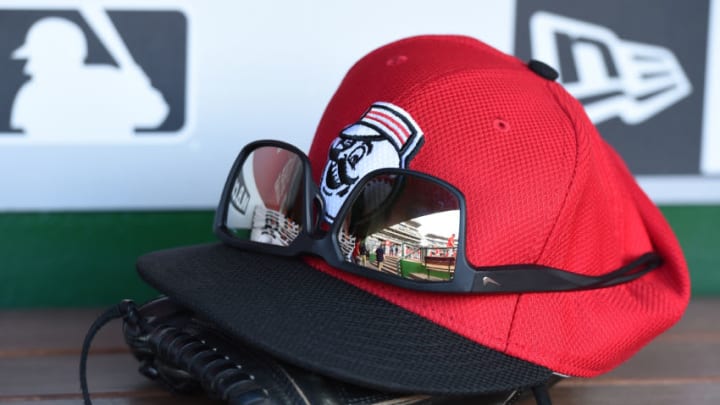The first professional season for Cincinnati Reds 2017 second-overall pick Hunter Greene has wrapped up. What went well for the teenage prospect and what went terribly wrong?
When the 2017 MLB Draft rolled around, there was a lot of talk about whether the Minnesota Twins would take two-way player Hunter Greene or let him fall to the Cincinnati Reds. Instead, the Twins took Royce Lewis and allowed the Reds to select Greene.
The Twins shouldn’t feel too bad about “settling” for what many might consider the second best option at number one. Lewis hit well while supplying the Twins’ minor leagues with a good amount of speed and decent power right from the jump.
Meanwhile, expectations were met and Greene fell to number two. The Reds landed the high school phenom they wanted. At the moment, he has a lot to work on. He is still trying to figure out whether he belongs as a pitcher or position player.
Unfortunately, the results on the field didn’t help make the decision much easier. Greene was bad on the mound and at the plate during the 10 games he played for the Rookie Ball Billings Mustangs.
In the seven games he played as a DH, Greene registered 30 plate appearances. He struck out eight times and failed to draw a single walk. His .233/.233/.367 batting line was a bit of a disappointment for someone with such promise.
More from Call to the Pen
- Philadelphia Phillies, ready for a stretch run, bomb St. Louis Cardinals
- Philadelphia Phillies: The 4 players on the franchise’s Mount Rushmore
- Boston Red Sox fans should be upset over Mookie Betts’ comment
- Analyzing the Boston Red Sox trade for Dave Henderson and Spike Owen
- 2023 MLB postseason likely to have a strange look without Yankees, Red Sox, Cardinals
Of course, the sample size is small. Only months earlier Greene was facing high school pitchers. If he had a little more time to figure things out, the end result could have been a little better than what Greene registered.
Things were far worse when Greene pitched. Over three appearances, Greene logged 4.1 innings and allowed six earned runs. Although he did strike out six batters, eight managed to pick up hits.
Greene’s 2017 professional season didn’t really show much of what he can do. Other than hitting with some power (sans a home run) and striking out batters, there’s not much positive from the short season in Billings.
According to MLB.com, Greene is the second best prospect in the Reds’ farm system. The second-overall pick in 2016, Nick Senzel, is the only one who ranks higher. It’s not quite fair to compare the two considering Senzel was drafted out of college and not the 12th grade. He’ll reach the big leagues long before Greene does. With any luck, they’ll share a seat during a victory parade sometime in the next decade.
Next: 5 under-the-radar prospects to watch
The Reds should remain patient with Greene. After all, there’s no rush to get him to the big leagues, nor does anyone expect him to suddenly pull a Mike Leake and join the pitching staff on short notice. Greene is merely experiencing some newcomer growing pains while playing against far more experienced professionals in his field.
By the end of 2018, we should have a better idea of the direction Greene is headed. First and foremost, it’s important to know what position Greene will play.
